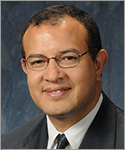 Battery Division Research Award
Battery Division Research Award
Monday 0800h | Room 217
Advanced Energy Storage Systems for Enabling Electrification of Vehicles “Lithium Ion & Beyond”
by Khalil Amine
Khalil Amine is an Argonne Distinguished Fellow and the leader of the Advanced Battery Technology team at Argonne National Laboratory, where he is responsible for directing the research and development of advanced materials and battery systems for HEV, PHEV, EV, satellite, military, and medical applications.
Amine currently serves as a committee member of the U.S. National Research Consul, U.S. Academy of Sciences, on battery-related technologies. He is an adjunct distinguished professor at Stanford University. Among his many awards, Amine is the 2019 recipient of the prestigious Global Energy Prize. He is also a recipient of Scientific American’s Top Worldwide 50 Research Leader Award (2003), the University of Chicago Distinguished Performance Award (2008), the U.S. Federal Laboratory Award for Excellence in Technology Transfer (2009), and the DOE Vehicle Technologies Office Award (2013). He is a five-time recipient of the R&D 100 Award, which is considered to be the Oscar of technology and innovation.
In addition, he was awarded the ECS Battery Division Technology Award, the Elsevier International Battery Technology Award, the International Coalition on Energy Storage and Innovation Award, the International Battery Association Award, and the NAARBatt Lifetime Achievement Award.
Amine holds 198 patents and patent applications and has over 556 publications with a Google h-index of 113. From 2008 to 2018, Amine was the most-cited scientist in the world in the field of battery technology. He served as the vice president and executive director of the IMLB. He is also the chair of the International Automotive Lithium Battery Association, an ECS fellow, a fellow of Hong Kong Institute of Advanced Studies, and an associate editor of the Nano Energy journal
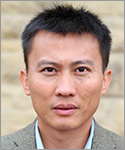 Battery Division Technology Award
Battery Division Technology Award
Wednesday 0900h | Room 223
Materials and Interface Design of Lithium Metal Anodes
by Yi Cui
Yi Cui is a professor in the Department of Materials Science and Engineering at Stanford University. He received his BS in chemistry in 1998 from the University of Science and Technology of China (USTC) and his PhD in 2002 from Harvard University.
After that, Cui went on to work as a Miller Postdoctoral Fellow at the University of California, Berkeley. In 2005, he became an assistant professor in the Department of Materials Science and Engineering at Stanford University. In 2010, he was promoted with tenure.
He has published approximately 430 research papers and has an h-index of 180 (Google). In 2014, he was ranked number one in materials science on Thomson Reuters’s list of “The World’s Most Influential Scientific Minds.”
Cui is a fellow of the Materials Research Society, The Electrochemical Society, and the Royal Society of Chemistry. He is an associate editor of Nano Letters. He is a codirector of the Bay Area Photovoltaics Consortium and a codirector of the Battery 500 Consortium.
His selected awards include the Dan Maydan Prize in Nanoscience Research (2019), the Nano Today Award (2019), Blavatnik National Laureate (2017), the MRS Kavli Distinguished Lectureship in Nanoscience (2015), the Sloan Research Fellowship (2010), the KAUST Investigator Award (2008), the ONR Young Investigator Award (2008), and the Technology Review World Top Young Innovator Award (2004).
Cui has founded three companies to commercialize technologies from his group: Amprius, Inc., 4C Air, Inc., and EEnovate Technology, Inc.
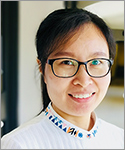 Battery Division Postdoctoral Associate Research Award
Battery Division Postdoctoral Associate Research Award
Sponsored by MTI Corporation and the Jiang Family Foundation
Monday 1140h | Room 223
Synchrotron Characterization to Inform Design for Cathode Materials in Li/Na Batteries
by Linqin Mu
Linqin Mu, currently a postdoctoral associate at Virginia Tech, is working on advanced energy storage materials and interfacial chemistry in batteries.
She received her PhD in condensed matter of physics in 2016 from the Institute of Physics of the Chinese Academy of Sciences. Equipped with broad knowledge on material synthesis and analysis using comprehensive X-ray spectroscopy and imaging techniques, she has made many achievements in understanding chemomechanical behaviors of layered oxides and designing better high-energy cathode materials for Li/Na-ion batteries.
As a result, she has published more than 10 first-author papers (e.g., in Nature Communications, Advanced Materials, Advanced Energy Materials, Nano Letters, Journal of Materials Chemistry A, Journal of The Electrochemical Society, and Nano Energy) and has coauthored many papers.
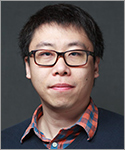 Battery Division
Battery Division
Postdoctoral Associate Research Award
Sponsored by MTI Corporation and the Jiang Family Foundation
Wednesday 1400h | Room 220
Toward the Stable and Reversible Lattice Oxygen Redox in Li-Rich Layered Oxides
by Minghao Zhang
Minghao Zhang earned his BS in physics from Nankai University (2009) and his MS in materials physics and chemistry from the Chinese Academy of Sciences (2012). He went on to receive his PhD in materials science and engineering from the University of California, San Diego (2017), after which he began working as a postdoctoral research fellow at the Laboratory for Energy Storage and Conversion (LESC) at the university.
His research interests include materials diagnosis through multidimensional characterizations, electrode materials design based on ab initio calculations, and synthesis/modification method development for next-generation lithium-ion and post lithium-ion batteries with high energy density.
Recently, he has made progress towards establishing a multi-scales advanced toolset for studying defect electrochemistry in cycled electrode, including first-principles calculation, neutron pair distribution function, coherent X-ray radiation, and plasma-focused ion beam technology.
Zhang has published more than 35 peer-reviewed journal articles on battery materials, including first-author/co-first-author papers in Accounts of Chemical Research, Nature Communications, Chemistry of Materials, Journal of The Electrochemical Society, etc.
He is also the author/coauthor of four patents on the synthesis of energy storage materials and has written one book chapter in the Handbook of Materials Modeling: Battery Electrodes, Electrolytes, and Their Interfaces.
 Battery Division Student Research Award
Battery Division Student Research Award
Sponsored by Mercedes-Benz Research & Development
Wednesday 1620h | Room 221
Solution-processable closo-borate Electrolyte for all-solid-state Sodium–ion Batteries
by Léo Duchêne
Léo Duchêne obtained his bachelor’s degree (2013) and master’s degree (2015) in materials science and engineering at the École Polytechnique Fédérale de Lausanne (EPFL) in Switzerland. During his studies, he visited the University of Waterloo in Canada and completed his master’s thesis at Lawrence Berkeley National Laboratory (LBNL) as part of the Joint Center for Artificial Photosynthesis (JCAP), where his work focused on microstructure engineering of organo-lead halide perovskite for solar cells applications.
Duchêne’s contribution to battery research started with his PhD in the Materials for Energy Conversion Laboratory at the Swiss Federal Laboratories for Materials Science and Technology (Empa). His work focuses on all-solid-state batteries with a particular interest in the development and device integration of new solid state electrolytes.
In a short time, Duchêne managed to bring to the spotlight a new family of electrolytes by demonstrating a particularly stable 3 V all-solid-state battery using his electrolyte, an above state-of-the-art result in the all-solid-state battery community. His research has been published in the Chemical Communications, Chemistry of Materials, and Energy & Environmental Science journals.
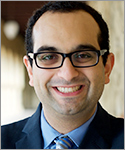 Battery Division Student Research Award
Battery Division Student Research Award
Sponsored by Mercedes-Benz Research & Development
Wednesday 1440h | Room 220
Degradation of Carbonaceous Negative Electrodes in Lithium-Ion Batteries across Multiple Length Scales
by Peter Attia
Peter Attia received his PhD from Stanford University in materials science and engineering in 2019 and his BChE in chemical and biomolecular engineering from the University of Delaware in 2014. For his PhD, Attia worked with Professor William Chueh to study degradation in carbon negative electrodes of lithium-ion batteries from the interfacial to full cell scales.
Attia’s work ranges from fundamental characterization and modeling of the solid-electrolyte interphase (SEI) to predicting and optimizing battery lifetime using machine learning techniques. For the former, he developed carbon black as a model carbon electrode for SEI studies; most notably, he identified that SEI growth rates are much higher on carbon lithiation than delithiation. For the latter, he developed a method for rapid optimization of battery fast-charging protocols by reducing the time per experiment (via early prediction of cycle life) and the number of experiments (via Bayesian optimization). Part of this work was published as the cover article in Nature Energy and highlighted in Nature.
He recently started at Tesla Motors as a senior data scientist, working to predict the lifetime of new battery chemistries.
Attia’s honors include the ECS Battery Division Student Research Award (2019), the MRS Graduate Student Award (2019), the MRS Open Data Challenge Award (2019), the NSF Graduate Research Fellowship (2014), and the Stanford Graduate Fellowship (2014).
 Corrosion Division H. H. Uhlig Award
Corrosion Division H. H. Uhlig Award
Tuesday 1400h | Room 307
Shedding Light on Corrosion
by Alison J. Davenport
Alison J. Davenport is a professor of corrosion science and head of the School of Metallurgy and Materials at the University of Birmingham, UK. She received her PhD from the University of Cambridge, and then spent time at Brookhaven National Laboratory, New York, and the University of Manchester, UK, before moving to Birmingham.
Her research has focused on in situ characterization of corrosion processes using synchrotron X-ray methods including scattering, spectroscopy, imaging, and elemental mapping for a wide range of applications.
In the early part of her career, she carried out in situ investigations into the chemistry and crystallography of passive films, and then focused on the chemistry of pits, investigating the crystallography of salt layers and solution chemistry in artificial corrosion pits. She has also carried out radiography and tomography studies of the evolution of pit morphology in systems of relevance to nuclear waste storage and corrosion of airframe alloys and used XRF mapping to study corrosion of biomedical implants and PEM fuel cells.
During her career, she has been chair of the ECS Corrosion Division, chair of the UK Institute of Corrosion’s Corrosion Science Division, and chair of the 2008 Gordon Conference on Aqueous Corrosion. In 2018, she was awarded an OBE for services to electrochemistry and corrosion science in the Queen’s Birthday Honours List.
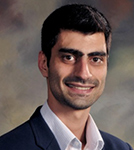 Corrosion Division Morris Cohen Graduate Student Award
Corrosion Division Morris Cohen Graduate Student Award
Tuesday 1430h | Room 307
Active Metallic Corrosion in Weak Acid Solutions: A Unified Mechanistic View to Cathodic Reactions
by Aria Kahyarian
Aria Kahyarian earned his BSc in chemical engineering from Sharif University of Technology in 2011. In 2018, he received his PhD in chemical engineering from Ohio University under the direction of Prof. Srdjan Nesic at the Institute for Corrosion and Multiphase Flow Technology. His graduate research focused on the mechanistic investigation of aqueous acidic corrosion in the presence of carboxylic acids, carbon dioxide, and hydrogen sulfide as well as mathematical simulation of such corroding systems. His findings in this field of study have been published as a number of journal research articles and book chapters.
His current work includes mathematical modeling of aqueous metallic corrosion as well as corrosion and electrochemical failures in microelectronic devices.
 Electrodeposition Division Research Award
Electrodeposition Division Research Award
Wednesday 1400h | Room 309
Electrodeposition of Semiconductor Films: Where Are We After Three Decades?
by Krishnan Rajeshwar
Krishnan Rajeshwar is a distinguished university professor at the University of Texas at Arlington (UT Arlington). He joined the university in 1983, after receiving postdoctoral training at Colorado State University. He is also the founding director of the Center for Renewable Energy and Science Technology (CREST) on the UT Arlington campus.
He is a past ECS president and a past editor of Interface magazine. Currently, he serves on the editorial boards of several electrochemical journals and as the editor-in-chief of the ECS Journal of Solid State Science and Technology.
Rajeshwar is also an ECS fellow. He received the ECS Energy Technology Division Research Award in 2009. Additionally, he was awarded the Doctor Honoris Causa by the University of Szeged, Hungary, in 2017.
He has authored monographs and edited books, special issues of journals, and conference proceedings on energy conversion. Rajeshwar is the author of over 350 refereed and well-cited publications (cited ~20,000 times, h-index: 66).
His research interests span a wide spectrum including photoelectrochemistry, solar energy conversion, renewable energy, materials chemistry, semiconductor electrochemistry, and environmental chemistry. Germane to this award, he and his collaborators have pioneered many chemistries and approaches for the electrodeposition of semiconductor films.
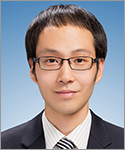 Electrodeposition Division Early Career Investigator Award
Electrodeposition Division Early Career Investigator Award
Wednesday 1440h | Room 309
Additives in Cu Electrodeposition for Through-Silicon Via Filling and the Growth of Cu Nanocrystals
by Myung Jun Kim
Myung Jun Kim received his BS (2007) and PhD (2013) in chemical and biological engineering, both from Seoul National University. He earned his PhD after studying the electrochemical deposition of metals and alloys under Professor Jae Jeong Kim.
He continued this work as a postdoctoral researcher at the same university at the Research Center for Energy Conversion and Storage (RCECS) and the Institute of Chemical Process (ICP) from 2013 to 2015. His research at Seoul National University included pulse and pulse-reverse electrodeposition and the development of additives for through-silicon via filling. He also developed an electrodeposition method for Cu-Ag bimetallic superfilling and participated in research on electroless deposition and electrocatalysts.
Since 2016, he has been exploring the growth mechanism of anisotropic metal nanostructures and the applications of metal nanowires for electrosynthesis as a postdoctoral associate under Professor Benjamin J. Wiley at Duke University. There, he analyzed the growth mechanism of Cu nanowires and the behavior of shape-directing agents via electrochemical techniques with single-crystal electrodes. His research revealed facet-dependent behavior of shape-directing agents that could answer unresolved questions in the anisotropic growth of metal nanocrystals.
He is currently expanding his research to nanostructured porous electrodes for improving the productivity of electrochemical processes.
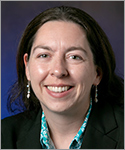 High-Temperature Energy, Materials, & Processes Division J. Bruce Wagner, Jr. Award
High-Temperature Energy, Materials, & Processes Division J. Bruce Wagner, Jr. Award
Thursday 0950h | Room 222
Impact of Structural Disorder on Opto-electro-chemo-mechanical Interactions in Mixed Conducting Perovskite Oxides
by Nicola H. Perry
Nicola H. Perry is an assistant professor in the Department of Materials Science and Engineering at the University of Illinois at Urbana-Champaign and a WPI assistant professor at the International Institute for Carbon-Neutral Energy Research (I2CNER) of Kyushu University.
In 2005, she received her BS in materials science and engineering (and BA in French studies), magna cum laude, from Rice University. In 2009, she received her PhD in materials science and engineering from Northwestern University.
Perry’s PhD research focused on local conductivity and permittivity in nano-ionics. She subsequently held postdoctoral appointments, first in the Energy Frontier Research Center for Inverse Design at Northwestern University, and then at I2CNER and the Massachusetts Institute of Technology (MIT), in the Department of Materials Science and Engineering. Her postdoctoral research involved inverse design of p-type transparent conducting oxides, discovery of missing materials, and thin film/bulk mixed ionic and electronic conductors.
Prior to moving to Illinois in 2018, she served as a WPI assistant professor at I2CNER, where she ran the electro-chemo-mechanics laboratory in the Electrochemical Energy Conversion Division and continued as a research affiliate at MIT.
Her awards include an Edward C. Henry Best Paper Award from ACerS, two KAKENHI Awards from JSPS, an IUMRS Award for Encouragement of Research, and a Department of Energy (DOE) Early Career Award.
Her current research focuses on the development of new synthetic and characterization methods to understand and engineer point-defect mediated properties—particularly transport, reaction kinetics, and chemical expansion—in electro-chemo-mechanically active oxides for energy conversion/storage, sensing, and electronic applications.
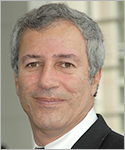 Europe Section Heinz Gerischer Award
Europe Section Heinz Gerischer Award
Monday 1200h | Room 215
The Physical Electrochemistry of Semiconductors
by Nathan Lewis
Nathan Lewis, George L. Argyros Professor of Chemistry, has been on the faculty at California Institute of Technology since 1988 and has served as a professor since 1991. He has also served as principal investigator of the Beckman Institute Molecular Materials Resource Center at Caltech since 1992. He was on the faculty at Stanford, as an assistant professor from 1981 to 1985 and as a tenured associate professor from 1986 to 1988. Lewis received his PhD in chemistry from the Massachusetts Institute of Technology.
Lewis has been an Alfred P. Sloan Fellow, a Camille and Henry Dreyfus Teacher-Scholar, and a Presidential Young Investigator. He received the Fresenius Award in 1990, the ACS Award in Pure Chemistry in 1991, the Orton Memorial Lecture Award in 2003, the Princeton Environmental Award in 2003, and the Michael Faraday Medal of the Royal Society of Chemistry in 2008. He was elected to the 2017 class of fellows of the National Academy of Inventors. From 2009 to 2019, he served as editor-in-chief of Energy & Environmental Science. He has published over 500 papers and has supervised approximately 100 graduate students and postdoctoral associates.
His research interests include artificial photosynthesis and electronic noses. Lewis has been active in the solar fuels and solar chemical field for over 40 years. Details of these research topics focus on light-induced electron transfer reactions, both at surfaces and in transition metal complexes, surface chemistry and photochemistry of semiconductor/liquid interfaces, novel uses of conducting organic polymers and polymer/conductor composites, and development of sensor arrays that use pattern-recognition algorithms to identify odorants, mimicking the mammalian olfaction process.




